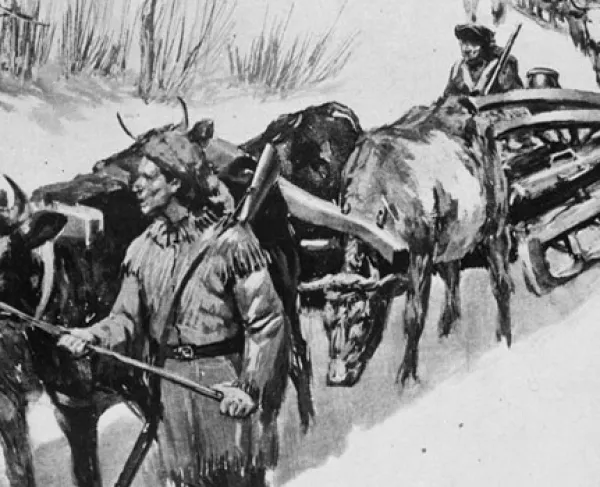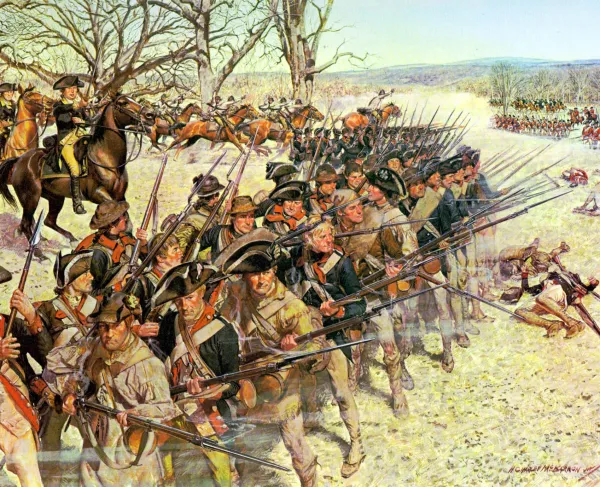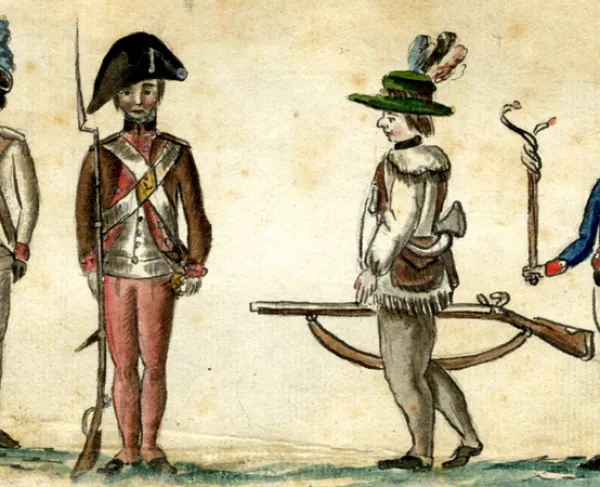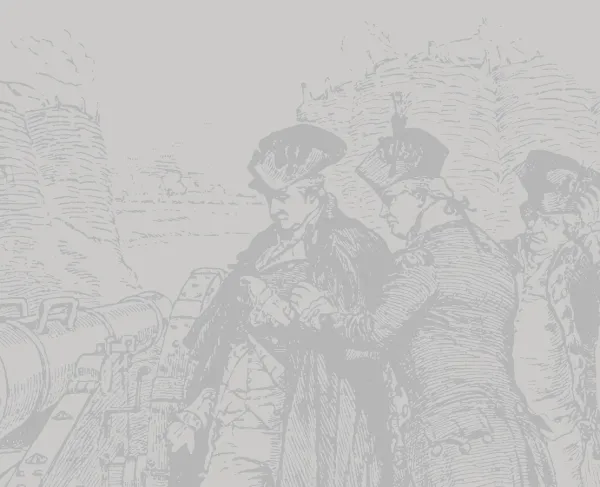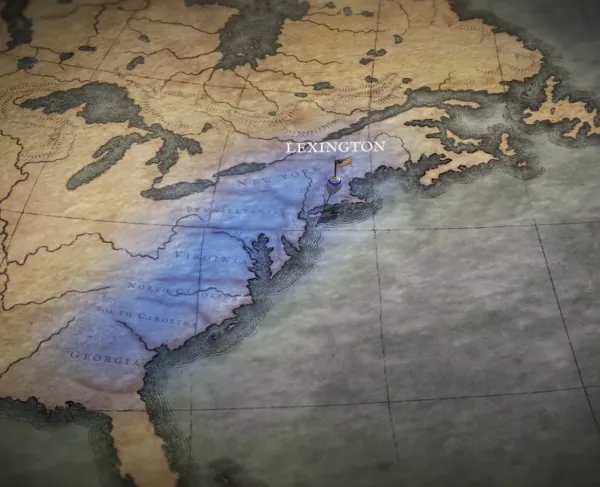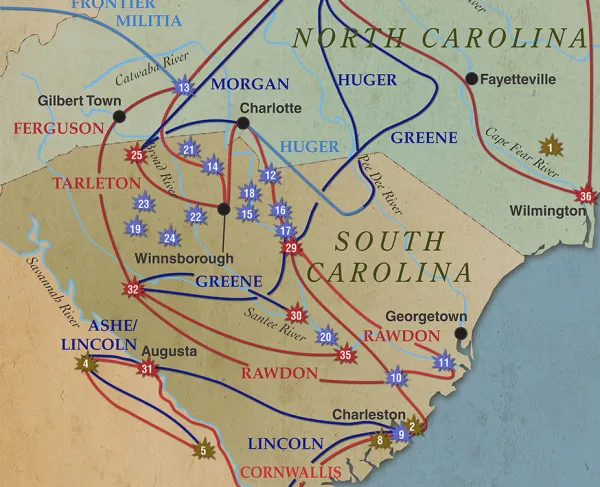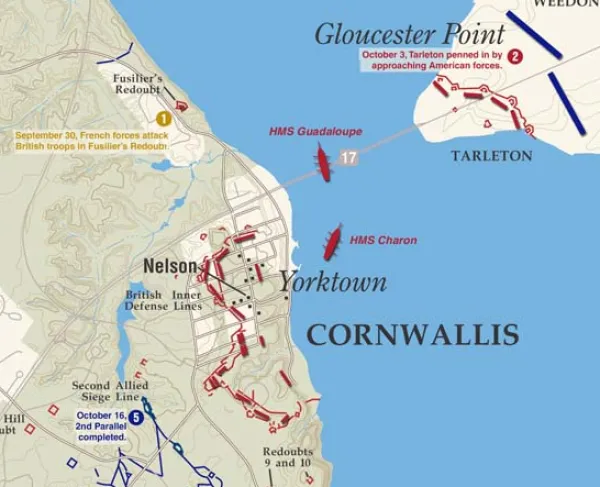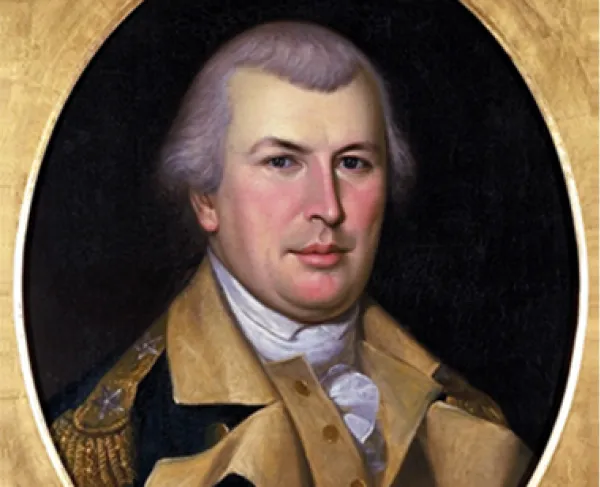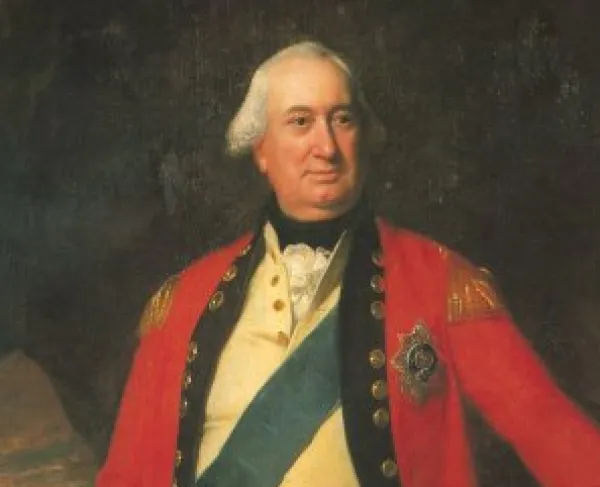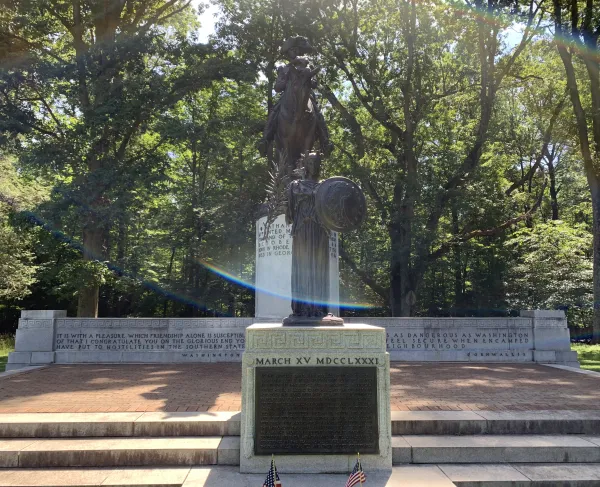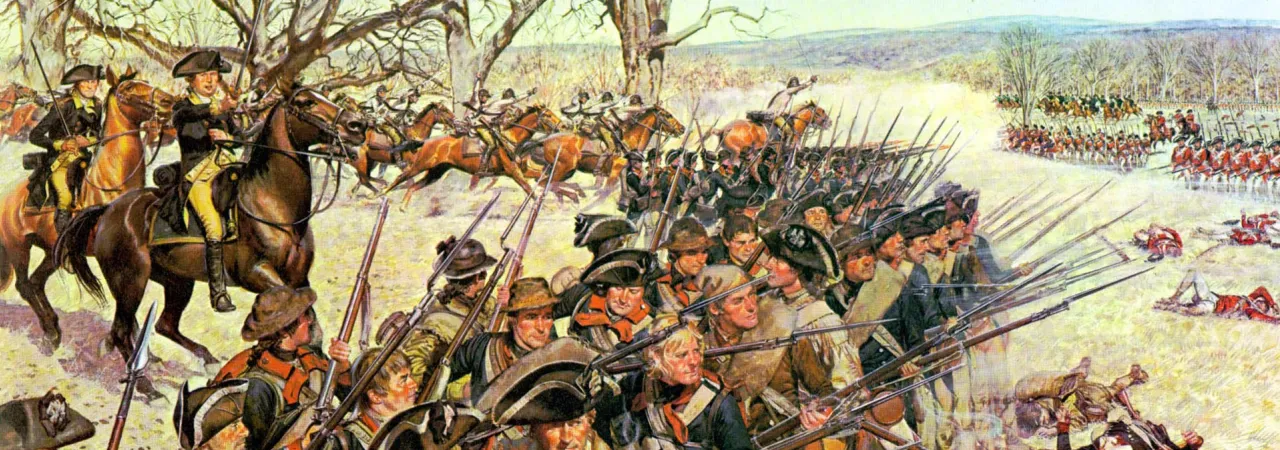
The 1st Maryland Line stands their ground at the Battle of Guilford Courthouse
Guilford Courthouse
North Carolina | Mar 15, 1781
On March 15, 1781, British General Charles Lord Cornwallis’s army of 2,100 men engaged a Continental army under Major General Nathanael Greene at Guilford Court House, near present-day Greensboro, North Carolina.
Adopting a tactic utilized by Daniel Morgan at the Battle of Cowpens, Greene formed his roughly 4,500 men into three lines. The first line was held by North Carolina militia. In the second line Greene positioned militia from Virginia. Continental Regulars composed Greene’s third and most formidable line. The concept, known as a defense in depth, was for the first two lines to exhaust the enemy's advance and inflict as many casualties as possible in the hopes of delivering a decisive blow at the third line.
Forming his men on both sides of the Great Salisbury Road, Cornwallis sent his men forward at 1:30 p.m. When the British got within 150 yards of Greene’s men, the Americans opened fire. The British pressed on, returning fire only when they got within range. On command, the British surged forward. The North Carolinians fired one more time and then retreated into the woods to their rear, abandoning their equipment as they fled.
Cornwallis then encountered stiff resistance from the Virginians, positioned about 400 yards behind the first line. North of the road, the 23rd Regiment of Foot, the 2nd Guards Battalion and the Guards Grenadiers engaged militia under Robert Lawson. Below the thoroughfare, the 2nd Battalion, 71st Regiment and elements from the 2nd Guards engaged Edward Stevens. The Virginians put up a stiff fight but with British infantry engaging their left, center and right, they were forced to retreat. Although Cornwallis had punched through two lines of American infantry, the British ranks had lost cohesion. A disjointed advance now approached some of Greene's best units.
The first British unit to reach the third line was the 33rd Regiment. There, the regiment engaged Continentals from Virginia and Maryland and were driven back. The 2nd Guards, however, managed to turn the 2nd Maryland's right but were stopped in a counterattack by Lt. Colonel William Washington’s Light Dragoons and the 1st Maryland. With additional British infantry finally arriving on the scene from their fight on the second line, Greene prudently disengaged and withdrew.
Guilford Courthouse was a pyrrhic victory for Cornwallis. Despite besting the American army, he had lost 25% of his men and was in no position to pursue Greene. Cornwallis decided to withdraw to his supply base at Wilmington to rest and refit. With his army still not in condition to engage Greene by the middle of April, Cornwallis decided to shift his operations to Virginia, a decision that would contribute to the independence of the United States.
Guilford Courthouse: Featured Resources
All battles of the Southern Theater 1780 - 1783 Campaign
Related Battles
4,400
2,385
1,310
532
